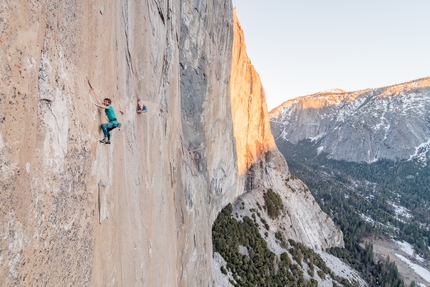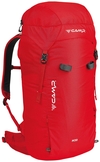Seb Berthe repeats legendary 'Dawn Wall' on El Capitan
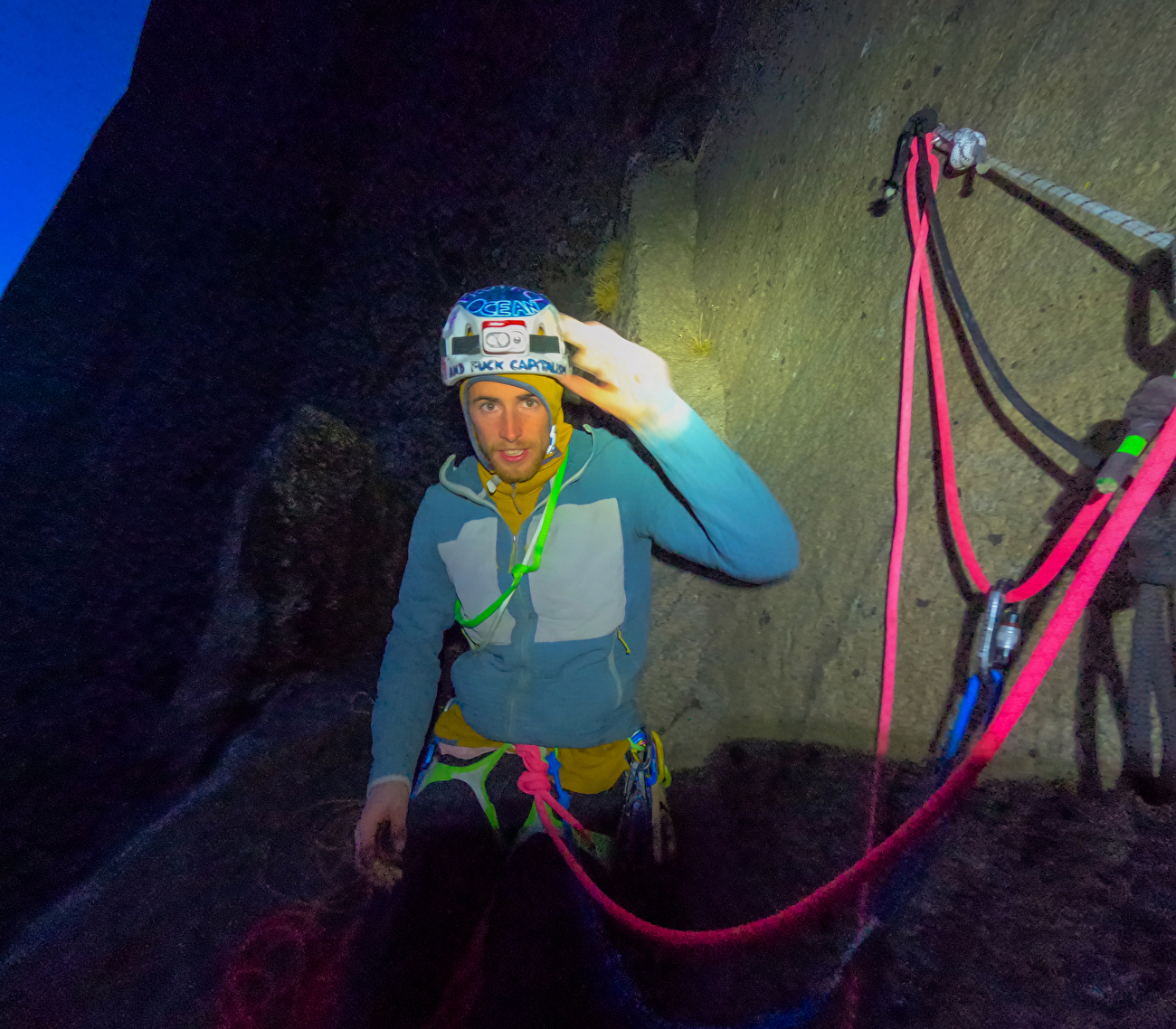
 1 / 20
1 / 20 Soline Kentzel
Soline Kentzel
At 8 am on 31 January 2025, after 14 days on the wall, Belgian climber Seb Berthe and his partner Soline Kentzel topped out El Capitan in Yosemite, having just made the fourth free ascent of the mighty Dawn Wall. Located on the SE Face of the Big Stone, the most difficult big wall free climb in the world was established by Tommy Caldwell and Kevin Jorgeson over a period of 19 days, from 27 December 2014 to 14 January 2015, and impressively repeated by Adam Ondra from 14 to 21 November 2016. Berthe is a highly experienced big wall climber and his success on the 900m line comes after a highly commendable previous attempt two years ago with fellow countryman Siebe Vanhee, as well as the second free ascent of Heart Route with Simon Castagne in 2016, Freerider in a day with Vanhee in 2017, a rare free ascent of The Nose in 2019, Golden Gate and El Nino in 2022.
Just like in 2022, Berthe traveled to the Americas by sailing boat in an effort to reduce his carbon footprint. After 50 days sailing, he, Soline Kentzel, Mathieu Miquel, Aidan Roberts, and Guillaume Lion reached Panama. Thanks to a training structure they'd built on the boat, he had not lost much of his form. From there, Berthe and Kentzel traveled across Central America and Mexico by public transport and reached Yosemite at the end of November.
Berthe teamed up with the extremely talented Connor Herson, and the pair immediately jumped on the Dawn Wall to start working the pitches. The meat of the climb, in the middle, contains two 9a pitches, followed by an 8c+, back-to-back. The Belgian explained, "For three to four long weeks (a total of 15 work sessions on the route for me this season), we ascended hundreds of meters on fixed lines, hauled bags, worked the crux pitches, and set up ropes... The Dawn Wall hadn’t changed — it was still an enormous undertaking, and everything about this process was hard: the climbing, the freezing winter temperatures mixed with the heat and sun exposure of this south-facing wall, the constant exposure, the unstable protection, the falling ice..."
During this month of effort, Berthe had finally figured out the crux on the first 9a where he had ground to a halt two years ago and had done almost all the hard sections, but the pair were exhausted. They bailed; Herson returned to his engineering studies in early January, and Berthe spent a week bouldering in Bishop and took nearly two weeks of complete rest.
An exceptional spell of dry weather was forecast for January, and despite not feeling 100% ready, when Kentzel offered to support him on a continuous push from the ground, Berthe realized this was an opportunity he couldn’t pass. He reasoned, "Even if the attempt failed, I could always try again later in the spring, and a push attempt would be the best possible preparation for one day sending the Dawn Wall." On 12 January, he embarked on a solo mission to haul 130 kg water, food and gear — enough for two full weeks of self-sufficiency — up to the portaledge camp, 400 meters off the ground. This took an entire day and not only drained all his energy but also resulted in him slightly injuring his lower back. He had intense lumbar pain, and four full rest days were required before he could even consider climbing again.
At 5 am on Friday, 17 January, Berthe and Kentzel set off, accompanied by Alex Eggermont behind the camera. Berthe climbed the first 13 pitches in 4 days, needing multiple attempts on some of the harder pitches, then rested for a day prior to tackling pitch 14, the first crux. Knowing that conditions were key, he got up before sunrise on day 6, worked the moves, then went for a first redpoint attempt. "I fly through the pitch, everything feels easy, and within minutes, I’m at the final crux — it’s happening! I go for the big move left, but just as I reach for the last holds... I slip. A scream of frustration tears through me." He refocused and made a second attempt 20 minutes later, only to slip right at the end again. With the sun now on the wall, he returned to the portaledge where his back pain flared up again, forcing him to rest for two full days.
On day 9, he decided to try again. "When I wake up, my back feels better — not healed, but manageable with ibuprofen. It’s a cold, cloudy day — perfect conditions. I warm up by reworking the final crux to figure out why I kept slipping. I think I’ve found a solution — it’s all about foot positioning." Luck was initially not on Berthe's side, and after a staggering 9 attempts, he started to despair. His diary entry reads as follows: "It’s 4:30 p.m., and a snowstorm is coming at 5. One last try. I convince myself I can do it. Attempt 10. It’s not my smoothest go, but I stick crux 1, then crux 2. As I reach the final rest before crux 3... it starts snowing. My shoes and fingers are getting wet. It feels hopeless. But I have nothing to lose. I go for it. Somehow, I stick the big move. My foot stays in place. I reach for the final jug — I’m still on the wall... YES! I sent pitch 14, in the snow! Pure euphoria. Back at the portaledge, the snowstorm rages, but I’m ecstatic."
Berthe had finally unlocked the door to pitch 15, the second major challenge of the Dawn Wall, there where Kevin Jorgeson had ground to a temporary halt during the first ascent in 2015. The pitch is rated 5.14c/d - 8c+/9a. Berthe, known for his severe grading, had this to say: "I would personally say more like 8c+, but a very technical and finger-intensive one. A long approach around 5.13d - 8b, followed by a precise boulder move requiring extreme foot and finger control." After checking the beta, a mere three attempts were needed to redpoint this pitch. He stated, "I squeeze my fingers harder than necessary in the crux, stay focused on the final moves, and it works! Yes!!! It’s starting to feel real now — I’m stoked!"
As there was still some daylight and energy left in the tank, he jumped straight onto Pitch 16, the Loop Pitch, which acts as an alternative to the iconic Dyno Pitch. Rated 5.14a/8b+ and described as "Probably the most unique pitch on the Dawn Wall," this involves downclimbing for about 20 meters to a small ledge, an easy traverse left, and then a slippery and technical endurance layback climb back up to the anchor. Both Caldwell and Ondra had opted for this pitch, while Jorgeson chose the Dyno variation. Berthe didn't know the moves perfectly, and despite trying repeatidly until his fingers bled, he was forced to call it quits for the day.
He rested for a full day and, on what was now day 12, gave pitch 16 his all. The weather forecast predicted only three days of good conditions before a week-long storm, and Berthe knew it was now or never, as the upper section of the climb would soon become soaking wet. He started early, but although he felt strong, he kept falling on the downclimb. Just before the sun hit the wall, he gave it one last try and miraculously made it down to the small ledge, described as "a perfect resting spot where I can even take off my shoes." He didn't stay long, however, as by now the sun was blazing, and he needed to finish the pitch before it got too hot. He climbed smoothly, but after the crux, the unthinkable: he slipped at the very last section.
At this point, Berthe was faced with a dilemma: "I have to make a tough decision: if I want to finish the Dawn Wall before the rain, I must keep moving. So, I decide to bend my ethics a little. Instead of redoing the full descent, I start from the ledge — effectively splitting the Loop Pitch into two pitches (probably turning it into two 5.13d routes instead of a 5.14a)." He rested for 10 minutes, then sent, commenting, "I really don’t feel great about this style compromise, but it makes some sense: the ledge at the bottom of the Loop Pitch is probably the best rest spot in the last 10 pitches."
Planetmountain reached out to Adam Ondra, who repeated the route in 2016, for his thoughts about this. The Czech explained "If you want to follow Tommy's rules it would perhaps be better to link the pitch, the way he did I reckon it's 8c, 8b+ for the down climbing section, 8a+ for the going up. But I can also see that it makes perfect sense to split it at that point like Seb did. The ledge is quite small, and although I don't think it's good enough to sit down, I do remember that on my ascent I took my shoes off and rested there, perhaps 10 minutes. I wish I could have stayed longer, also because from my point of view the logical thing to do would be not to stop at the single bolt belay at the top of pitch 16, but continue all the way up to the top of pitch 17. This would create one mammoth, completely logical 60m 9a pitch. I actually tried to do this link but failed right at the top. No, I personally have no problems with Seb splitting the pitch into two."
After this pitch, Berthe took a few hours' rest before attempting pitch 17, the last 5.14a/8c+, but despite giving it everything, he was forced to give up. Now he was worried: "The weather forecast worsens: I have only two days and one night left to climb the remaining five hard pitches and eleven easier ones. I feel cornered, completely under pressure. I’m already making backup plans: if I can’t finish, maybe I’ll stay in my portaledge through the storm and hope the upper wall stays climbable. But that’s a huge gamble." Day 13 broke, Erik Sloan took over the belaying in order to allow Kentzel some well-deserved rest, and in an inspirational afternoon, Berthe sent pitches 17, 18 (5.13c/d - 8a+/b), and 19 (5.13b - 8a). At night, he dispatched Pitch 20 (5.13c/d - 8a+/b) on his second go. The cards were now beginning to stack in his favor: "I head back to camp, full of hope. It’s not done yet — but it’s possible: I have one really tough pitch left (Pitch 21, 5.13d - 8b) and 11 easier pitches (ranging from 5.11+ - 7a to 5.13a - 7c+)."
The 30th of January broke, his 14th day on the wall, and Berthe knew this was going to be a big day: pitches 21 to 32, the summit push. He packed up camp, waited patiently for the sun to leave the face in the afternoon, warmed up on pitch 21, and then, with an intoxicating mix of stress and determination, sent pitch 21. "I throw myself toward the final finger lock and mantle onto the ledge with a scream of joy! That’s it, I’ve completed all the hard pitches of the Dawn Wall. I feel incredibly happy and proud."
In a race to reach the summit before the rain, the remaining 11 pitches were climbed in a haze, at night, with considerable difficulties and marked by utter exhaustion. Berthe explained, "I start feeling terrible: I struggle to eat, I feel like vomiting, and my body is deeply tired. With each pitch, I have to fight and leave a little piece of myself behind."
Berthe dug deeper than he has ever done, persevered and, after sending Pitch 31 (5.13a -7c+) and Pitch 32 (5.12b -7b), mantled onto the summit at 8 am. Victory at last. He commented, "We’ve just lived through an intense and unforgettable night. It’s a strange feeling... Due to exhaustion, I don’t fully grasp that it’s over, that the Dawn Wall is behind me. It will take me a few hours, or maybe more, to truly understand and appreciate it. Before descending, we take a moment to soak it in and snap some photos, including one with the sign we carried throughout the climb, bearing a particularly important message in these times: 'El Cap climbers against Fascism.'"
After returning to the base of the granite monolith, the 31-year-old stated the following: "Several times over the past week, for different reasons, the adventure almost came to an end, and the final hours were so painful that I sincerely believe I came face-to-face with my physical and mental limits for the first time. It was so close... It could have gone either way. I climbed my very best in those last days, and I fought hard. At the end of this journey and these 14 days on the Dawn Wall: a dream, an incredible achievement, and a major milestone in my climbing life, of which I am more than proud. Sure, this is 'just' a climbing ascent, a sporting achievement. But this climb is particularly important to me — probably the most significant of my life as a climber.
I also know that it will likely have some impact in the climbing world. That’s why I want to use my Dawn Wall ascent to bring this issue to the forefront. Silence is complicity; resistance is a duty.
What is happening right now in Belgium, France, Europe in general, and the United States is deeply concerning. We will all face the consequences, even within the privileged bubble of climbing. Fascism is not just about hateful rhetoric — it manifests in police violence, systemic racism and discrimination, and attacks on the rights of women and gender minorities. Being antifascist means rejecting all forms of oppression. Let’s talk about it, organize, protest, resist... My thoughts and solidarity go to all those who are suffering and will suffer the most from this rise of fascism."



 Copia link
Copia link

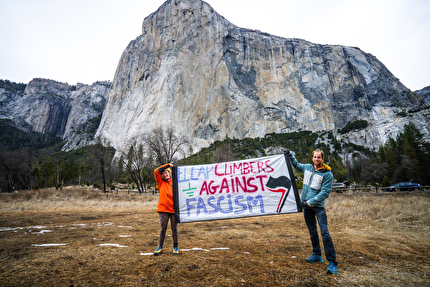
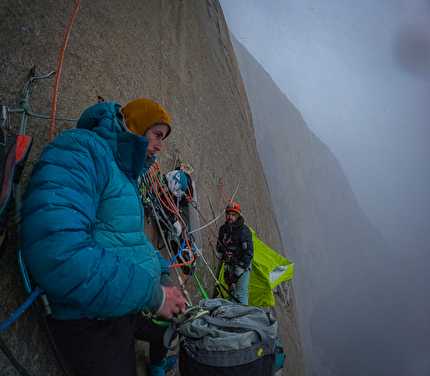
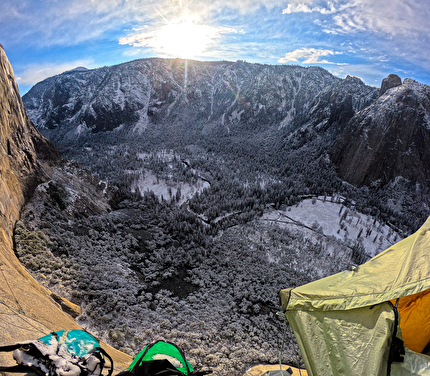















 See all photos
See all photos